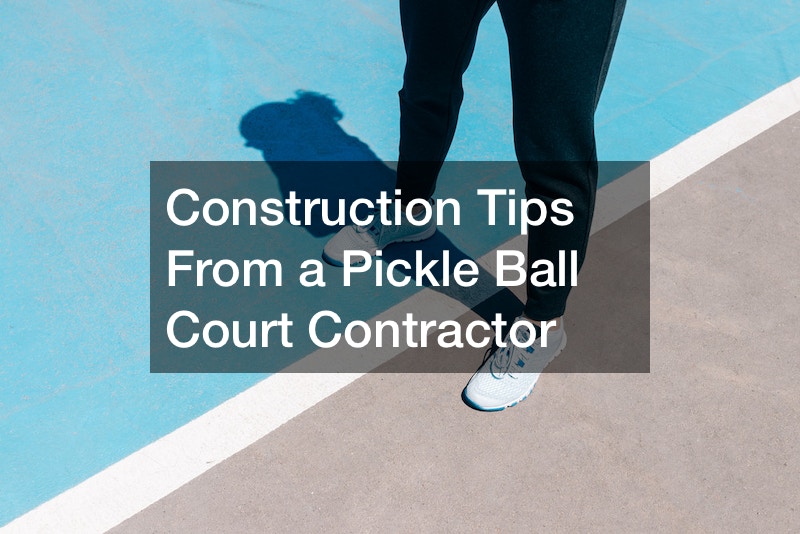Building a pickle ball court requires careful planning and execution to ensure a smooth playing surface and lasting durability. As a pickle ball court contractor, following a systematic approach can make the construction process efficient and successful.
The initial step involves marking the court’s dimensions by snapping and cutting lines, setting the groundwork for a 20 by 44-foot playing area.
Precision is key during this stage to guarantee the court’s proper alignment. Excavation follows, where machinery like a skid steer aids in the removal of excess material.
To address the challenge of maintaining a flat surface in a region prone to rain, the contractor recommends creating a slight slope. Utilizing a rotary laser, they mark an elevation change of an eighth to a quarter inch per foot from the high side to the low side. This strategic grading ensures proper drainage without compromising the court’s evenness.
Next comes the addition of rock material, specifically three-quarter minus, spread and leveled using a conveyor. Reinforcement is crucial, achieved by laying down rebar with blocks strategically placed for added strength. These measures contribute to the court’s longevity and resilience.
When it comes time to pour the concrete pad, the contractor emphasizes the importance of using a line pump to facilitate an even application. The poured concrete is then leveled and smoothed with pull floats, creating a perfect playing surface.
By following these meticulous steps, a pickle ball court contractor ensures a professionally constructed court that can withstand the rigors of the game while providing an enjoyable playing experience for years to come.
.

